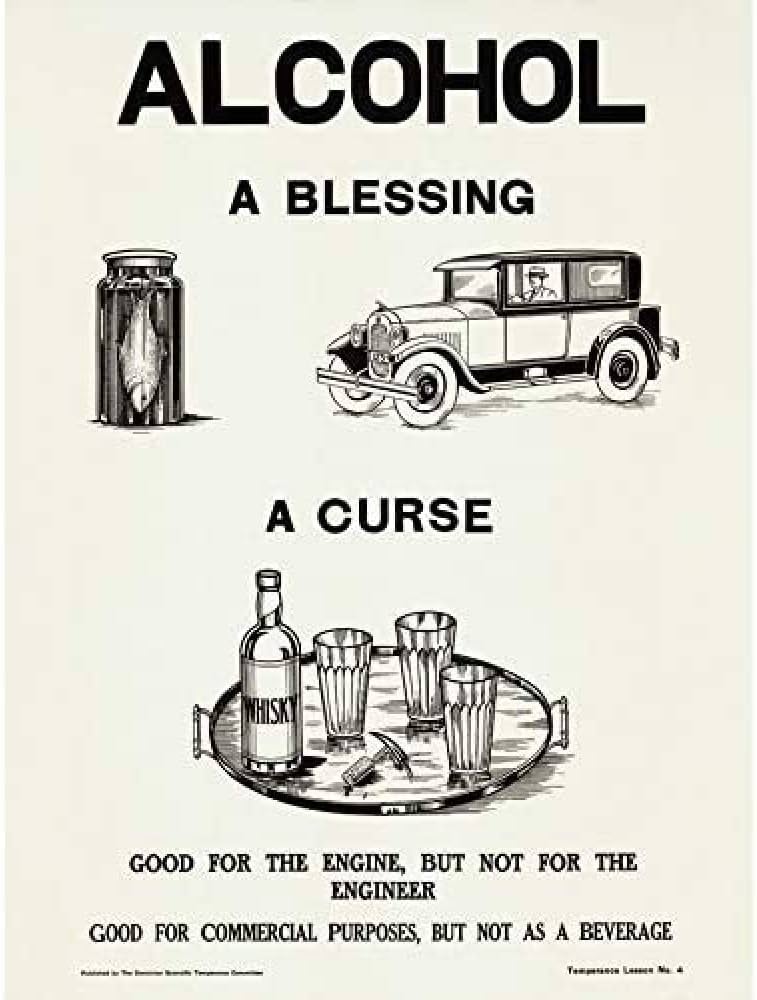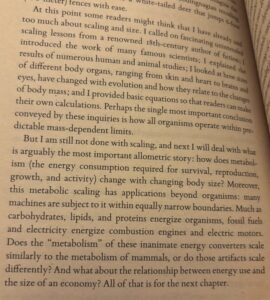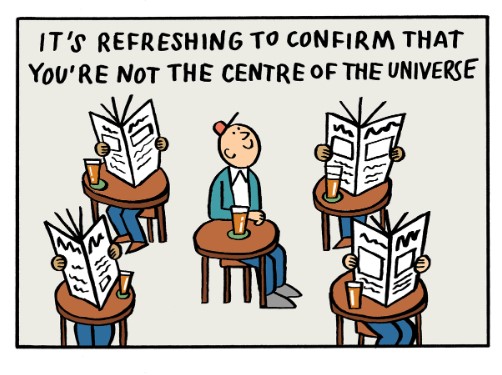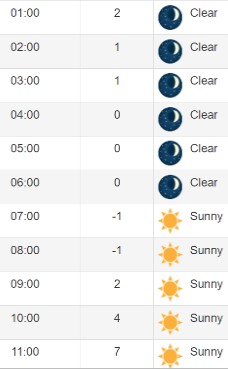 It’s really good, this whole passage of time thing. It really is. Isn’t it. It is… isn’t it? Fine. Face it. The holidays are over. OVER! But that doesn’t mean the celebrations are over. For example, in the U.S. of A. we hear that it’s Prohibition Remembrance Day celebrating the 106th anniversary of the ratification of the 18th Amendment to their Constitution. Whooo!!! If “neo-temp” was actually a real thing there’d be parades. I do love me a parade. But who needs parades when you have NA beer for $5 a can!
It’s really good, this whole passage of time thing. It really is. Isn’t it. It is… isn’t it? Fine. Face it. The holidays are over. OVER! But that doesn’t mean the celebrations are over. For example, in the U.S. of A. we hear that it’s Prohibition Remembrance Day celebrating the 106th anniversary of the ratification of the 18th Amendment to their Constitution. Whooo!!! If “neo-temp” was actually a real thing there’d be parades. I do love me a parade. But who needs parades when you have NA beer for $5 a can!
Speaking of fine traditions, at her very clearly titled Braciatrix: The Newsletter, Dr Christina Wade shares her thoughts on the wassailing tradition which marks the eve of the Epiphany in Christianity. Or rather traditions:
Some versions of the tradition are known as apple howling, which is probably one of the most metal names I have ever heard. Excellent band name tbh. Regardless of exactly how people celebrated wassailing specifically, one thing does seem to often remain at the centre of these traditions- that is the alcoholic beverages. My favourite. So what exactly do we drink? We drink Lambswool or Lamb’s Wool. No, not the actual fuzzy stuff from the adorable creature better known for making sweaters. Nay. It’s a beverage made from ale, spices, sugar, and roasted apples. Some recipes also call for cream, eggs, or both.
That sounds pretty excellent if you ask me. Winterfestive. Speaking of the old Epiph’, we had a visitor who had spent much of 2024 in France over for the holidays and we had a galette des rois but I had no idea it was pagan and also no idea that it was causing another boring woke-trad political scandal in the old country due to its history:
Historians say French Epiphany cakes — called galette des rois (literally, galette of the kings) — can be traced to Roman festivals dedicated to Saturn and to the longer daylight hours after the winter solstice. The custom was to put a bean in cakes given to slaves, and to name the one who found it “king for the day”. In modern France, the bean has been replaced by a porcelain figure, but the finder still gets a paper crown. Over the centuries, the galette des rois merged with Epiphany and it became usual to start eating them after 12th night, at least until the French Revolution, when the cakes were banned in a drive to eradicate Christianity in the 1790s.
Matthew C, taking on the player-manager role this week, published his story on Roosters Brewery in Harrogate, England in which he does a few very unusal things. It is more than a B.O B.* Is that a B.B.O.B.? One thing is that he interviews other people to corroborate the story shared by a brewery owner. And he does background research to tell the tale of the brewery from older records than the recitals of the owner. This sort of thing gives the reader great confidence, especially as the main players seem a bit quiet:
Brew Britannia also speaks of Franklin’s reclusiveness (despite numerous attempts, I was not able to contact him for the purposes of this article) and his modesty. It’s apparent, speaking to those who knew him, that he does not consider himself to be a trailblazer, despite plenty of evidence to the contrary… “Sean was quite straightforward once we’d made contact. Mostly he was a bit embarrassed to be treated like a great authority or legendary figure. He was at great pains to credit others wherever he could,” Boak and Bailey tell me of their interactions with him, which took place in 2013. “He also described himself as an introvert and he was certainly fairly quiet and thoughtful in our conversations—although certainly passionate enough when he got down to actually talking about wine and beer.”
Such a good bit of investigation based writing, especially in a positive portrait.** Speaking of which, even with perhaps a finer focus. The Beer Nut – or rather his alt personality Stash Killer – released the results of his study on a six year old nitro can of Guinness:
It’s in the flavour where I think we’ve had some evolution. It’s definitely more flavoursome than when young, and I wish I had a fresh can to hand to compare. The tartness has both increased and become more rounded, adding a kind of classy balsamic vinegar effect. Conversely, that finishes on a sweeter note, with some chocolate, which is something in most stouts that I find missing in Guinness, and a little maraschino cherry. We’re back to regular programming with the quick finish and minimal aftertaste.
Detail. We meet that again. As mentioned a couple of weeks ago, over on BlueSky, Kevin of Casket Beer, asked if anyone had ever had a Scotch Ale out of a thistle glass. Let me ruin the punch line to one of his findings:
So where did we get the notion that the thistle glass was somehow an important part of Scottish beer culture? The Gordon glass may have played a role. However, the 1993 book, Scotch Ale, by Greg Noonan likely had a significant impact, at least in the United States. The cover prominently features a beer in a thistle glass. The book’s contents do not get into glassware or indicate an explanation for why the glass was used. Maybe it was influenced by Gordon. The influential book likely conveyed to a generation of brewers, homebrewers and enthusiasts, that the glass had some meaningful connection to Scottish Ale.
Read the rest for find more findings. It’s not all that precise, sadly. As far as lost goes, these days in all the seesaw back and forth about various recent studies of medical studies and statements resting more and more on labels and less on methodology,*** I found some relief in the transcript from a transcript from TVO’s news magazine The Agenda from almost seven years ago when Mr. B himself**** and three other drinks authors to discuss the question. And it is a civil discussion where views and differences were shared and considered. Firm view like this:
If you can decompress with one glass of wine and keep it at one glass of wine per day, that’s a very uncommon pattern, but if you can more power to you. But those who get into trouble with alcohol tend to find it’s progressive, and denial is a big part of it. So if you can stick to one, go for it.
Speaking of firm and even disagreeable views but, still, focused on the detailed examination… Boak and Bailey wrote about some of the disregarded pubs of the Easton district of Bristol. Then, more importantly, in their Patreon account wrote about a few of their toilets:
Last night, neither of us popped the cork until The Sugar Loaf. Despite having been cleaned up and made a little smarter, it’s still basically down-to-earth. That meant that the toilets had no soap but did have water hot enough to have made tea with. As in, dangerously, scaldingly, steaming hot. Not that the soap or the water mattered much because nobody was washing their hands. [Shudder.]
Not segueing on the notion of popping corks at all, I noticed an interesting idea in this column by Eric Asimov in the NYT on a trend in restaurant wine lists – focus:
The wine list at Smithereens, a new seafood restaurant in the East Village, is shocking to say the least. Of its 62 selections, more than half, 32, are rieslings. Twenty-nine more are various other whites. There’s only one red wine, a pinot noir from Shelter Winery in the Baden region of Germany. Some may criticize a list like that as self-indulgent, but I love it. I rarely see a wine list with such attitude or character… I’ve noticed more and more relatively short wine lists… Not all are as provocative as the Smithereens list, but they are incisive, chosen to convey a point of view and, as good lists ought to do, shape the character of the restaurant.
Sounds like the brewery in Maine that made six stouts twenty years ago. I also like how it is aimed at breaking assumptions. Iconoclasm. Sadly, we too often read of presumed and autonomously authorized ways, like how to achieve a “sensory worst“***** which, if we are honest, depends on learning from the pew and then walking out as an adherent to a form of authority – comforting maybe but that’s too close to the precious basement of speakers, amps and equalizers audiophile approach. If you understood this at all the levels I do, you’d agree.
There are limits to disagreeability, however. In The Times this week we read about one of those situations where two sorts of disagreeabilities clash as each is based on a human right:
Pubs could ban customers from speaking about contentious beliefs such as religious views or transgender rights over fears of falling foul of Labour’s workers rights reforms. The government has been warned by the equalities watchdog that rules could “disproportionately curtail” freedom of expression and be applied to “overheard conversations”. Ministers have proposed that employers must protect workers from being harassed at work by “third parties” such as customers or clients. If they fail to do so they could be sued. However, the Equality and Human Rights Commission (EHRC) said this was particularly challenging in cases involving a “philosophical belief”, such as people’s views on religion or women’s rights, because many business owners do not understand such topics are protected by equality law.
Now before any of you scream “WOKE!” like a ninnie (beside the fact J. Christ Himself ask us to be awake), I can share that I have dabbled in this sort of human rights and we need to know just as there are intersecting rights we can have competing rights.****** So these knots need unraveling. And, just to be clear, there is not obligation to allow the loud boorish bigot to remain in the pub. As JJB himself has stated:
…nobody in mine ever uses racist language like Farage’s Reform activists, and if they did they’d be told to leave and never return.
With that good word, a reminder of all you all needing to put down more good words. The Session is trying a revival, a resuscitation even. On Friday January 31, 2025 please post your thoughts – via blog, newsletter, social media… anything – on the topic:
“What is the best thing to happen in good beer since 2018?
Publish on last Friday in January and then leave a comment here on a comment or even email me the link at beerblog@gmail.com! I have also proposed hosts of the February 2025 (if there is breath in the old corpse) the form of which I will leave in their good hands along with this wise advice emailed from Stan: “I will support in any way that does not require too much work ;>)“!!! Do it!
That’s it. Mid-January is here and boy is it going by. As it flees, please check out Boak and Bailey every Saturday and Stan going strong again each and every Monday. Then listen to Lew’s podcast and get your emailed issue of Episodes of my Pub Life by David Jesudason on the (sometimes even but never) odd Fridays. And Phil Mellows is at the BritishBeerBreaks. Once a month, Will Hawkes issues his London Beer City newsletter and do sign up for Katie’s wonderful newsletter, The Gulp, too. The Share looks to be back with a revival. Ben’s Beer and Badword is out there with the all the sweary Mary! And check out the Atlantic Canada Beer Blog‘s weekly roundup. There is new reading at The Glass which is going back to being a blog. Any more? Check out the Beer Ladies Podcast. That’s quite good and they are revving up for a new year. And the BOAS podcast for the bro-ly. And the long standing Beervana podcast …except they have now stood down. Plus We Are Beer People. The Boys Are From Märzen podcast appears suspended as does BeerEdge, too. VinePair packed in Taplines as well. All gone. But not Ontario’s own A Quick Beer. There is more from the DaftAboutCraft podcast, too. All About Beer has sponsored trade possy podcasts and there’s also The Perfect Pour. Plus follow the venerable Full Pint podcast. And the Craft Beer Channel on Youtube. The Moon Under Water is gone which is not surprising as the ask was $10 a month. Pete Brown’s one cost a fifth of that but only had the one post. Such is life.
*Better Brewery Owner Bio?
**Also positive, his piece which should be called “Gud Wee Coo!“
***A new and damning report came out just this Tuesday according to the NYT: “Among both men and women, drinking just one alcoholic beverage a day increases the risk of liver cirrhosis, esophageal cancer, oral cancer and injuries of various kinds, according to a federal analysis issued on Tuesday. Women face a higher risk of developing liver cancer even at this modest level of drinking. Drinking two drinks a day — double the U.S. Dietary Guidelines’ recommendation for women but the current amount condoned for men — increases the odds of a death caused by alcohol for both men and women.” Expect outcry for booze boosters! Stan has a better way: “There is no denying the negative impact alcohol has on your body. It is stupid to claim otherwise. The rest I leave to Mary-Chapin Carpenter.“
****A long standing TVO regular it seems from the available records from 1998 or so. Not the absence of references to “craft” in the lexicon.
*****Has anyone figured out why craft experts were so good with all the flaws but so poor at the strengths?
******A plain example are those chevrons built into public sidewalk corner wheelchair ramps. When they first were installed, instances of people with limited vision walking into traffic increased. The chevons act as a warning to those using a white cane.








 My top tipple of the last ten days, in case you were wondering, has been
My top tipple of the last ten days, in case you were wondering, has been 



